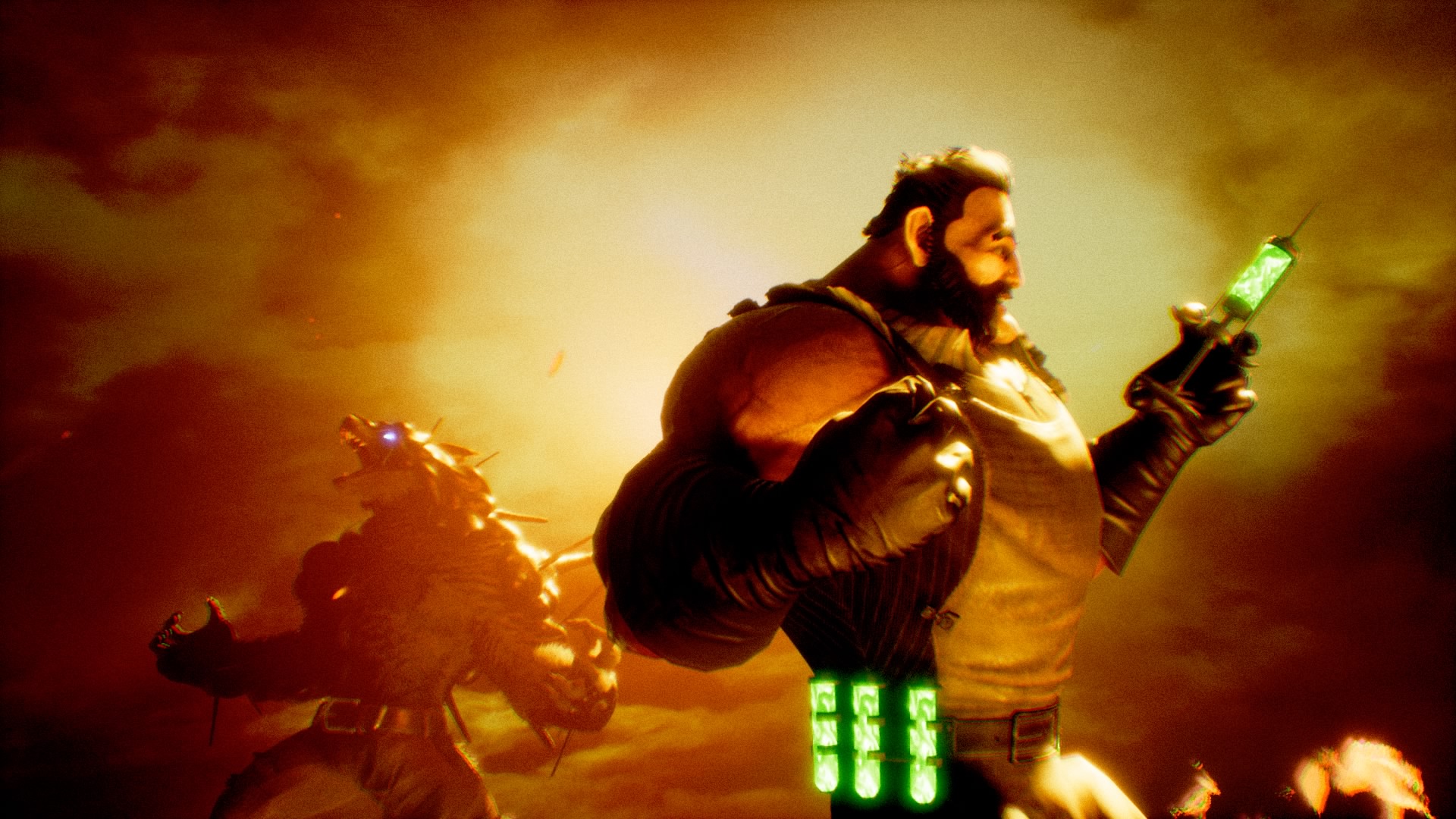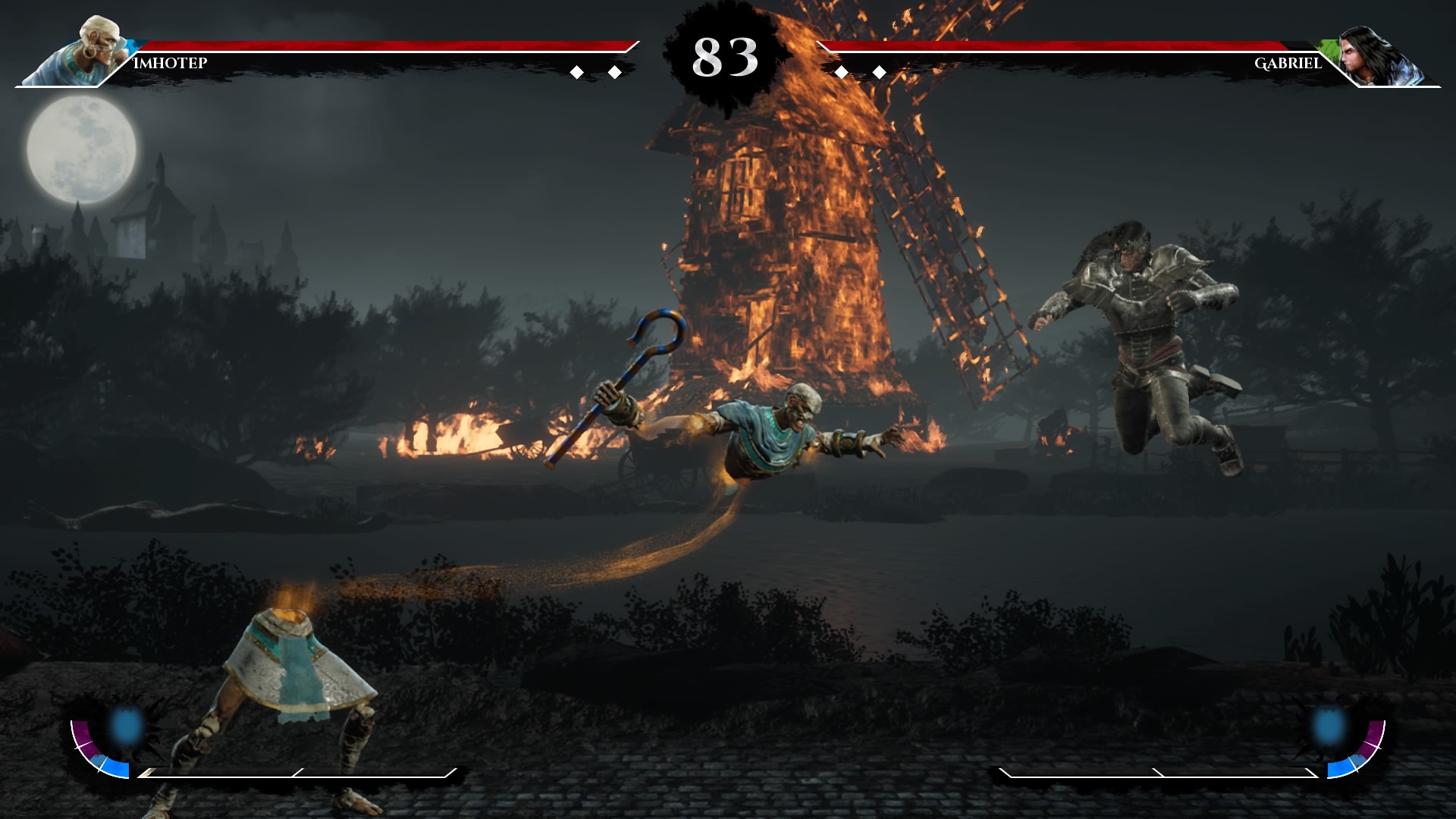Omen of Sorrow Review
Two dimensional in every sense of the word.

First impressions can tell you a lot about a game, and it’s fair to say my first impressions of Omen of Sorrow were not very good. After an inexplicably long loading screen (a consistent feature of the game), three identically-modelled zombies ambled towards my character before being destroyed by a companion NPC who started spouting some of the hammiest dialogue I’ve ever heard – or read, more accurately. It was an innocuous start, setting the scene for the B-movie feel of the rest of the game.
Omen of Sorrow is a 2D fighting game similar in mechanics to Mortal Kombat or Street Fighter. As such, some of its flaws can almost be excused as nostalgic evocations of the tropes of the genre: the poor writing; the over-the-top, caricature-like characters; the nonsensical story. Almost.
If there’s one thing to like about Omen of Sorrow, it’s the premise. Omen of Sorrow’s twelve characters mainly hail from the canon of 19th century European literature and folklore, from well known Victorian-Gothic figures such as Dr. Hyde, Quasimodo and Frankenstein’s Monster (called Adam in the game) to more obscure offerings such as Caleb, a werewolf known as “the lost samaritan” and a vampire. There’s an Arthurian knight thrown in there too, and several others whose origin I can’t corroborate. Inexplicably, there’s a number of Dante references, although I’m still unsure what purpose they serve.

The bread and butter of any fighting game is the fighting, and here Omen of Sorrow is somewhat more assured. Although characters feel a little slow and cumbersome, there’s enough variety in the game’s combos and finishers when fighting a human opponent to keep things interesting for a few rounds. The lack of a blocking mechanic keeps fights reasonably fast paced, whilst some imaginative combos ensure you can chain some decent-looking moves.
The uniqueness of every character also ensures there is some measure of depth to the combat. Learning the strengths and weaknesses of your own fighter of choice is only as important as learning your opponent’s, which adds a nice feeling of scope to the game’s fighting. Whilst the learning curve is very steep due to the unhelpful nature of the tutorials and the info menus, there’s some reward to be found here for those intrepid enough to play this game for a long period of time.
It’s not without its issues, though. I found that you can very easily get pinned into a corner, whilst a slightly slower than average response time means that spamming moves is more effective than most people would like. It’s also extremely difficult to find a game online, and the paucity of players playing the game meant that skill-ranking was almost impossible. Indeed, the very first game I played online matched me, after ten or so attempts, with a player who totalled over 240 wins.
This state of affairs is not helped by the fact that the AI, which is the main alternative apart from local split screen, is incredibly dull. They are almost patronisingly easy and can be defeated every game by spamming the same move repeatedly, even on ‘Very Hard’ difficulty. This makes the Survival, Arcade and Story modes pretty tiresome to play through.

The Story mode itself is really quite something. It’s split into three chapters, and each chapter explores an origin story of some of the characters. At, least that’s how it seemed. It was genuinely quite hard to be sure, so nonsensical was the plot.
There are three chapters, but I was left unsure how they correspond with each other. The first one feels like the finale, giving the story a slightly lopsided feel as the stakes are lowered as you play, and if you find the first chapter baffling to follow, the second and third are even more absurd. The third, in particular, which follows Adam and Dr. Hyde, makes almost no sense whatsoever, and the twist at the end of it genuinely made me laugh out loud. The other chapters are typically melodramatic and full of overly pompous dialogue. Additionally, the main narrator really sounded more suited to adult acting, which didn’t help me in my attempt to take any of the game seriously.
That said, the story is really quite endearing, in some ways. And to be fair, it does give the world’s lore a bit of depth. It certainly entertained me, even if the laughs were at its expense. At one point, I began suspecting that the writing was parodying the contrived way in which characters get into fights in fighting games, but there just wasn’t enough self-awareness at any point to suggest that was the case. I’m not sure how many people buy these kind of games for the story, but it really did reinforce the sense that this product was either not entirely sincere, or else was really quite lacking in quality.
The Survival and Arcade modes are not very appealing as they pit you against large numbers of AI fighters, and offer little in the way of rewards aside from a few trinkets and a score on a local leaderboard. They do add longevity – at least in theory – but I never really found myself wanting to play them for much longer than twenty or thirty minutes at the absolute maximum.
If this game is supposed to invoke nostalgia for a past era, it succeeds. Unfortunately, that era was in the days when you’d go to a game shop, pick something out of the bargain bucket for a couple of quid, and play it with a friend for the afternoon whilst having a good laugh at its expense. That this product reminded me of those days whilst costing £45 is a pretty damning reflection of what kind of game this is.
[Reviewed on PS4]
